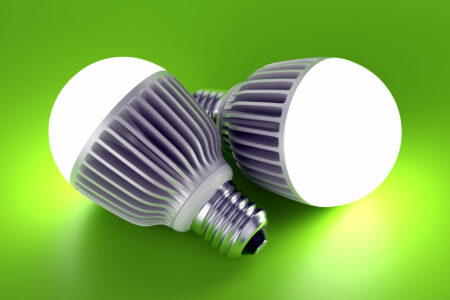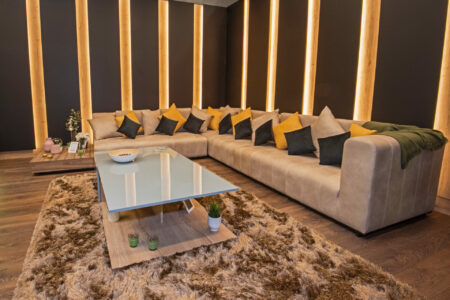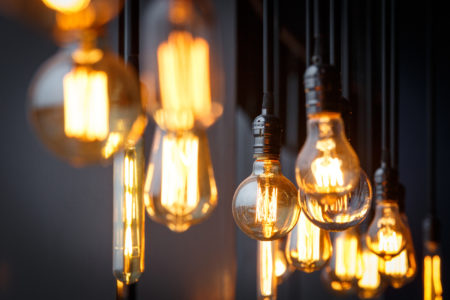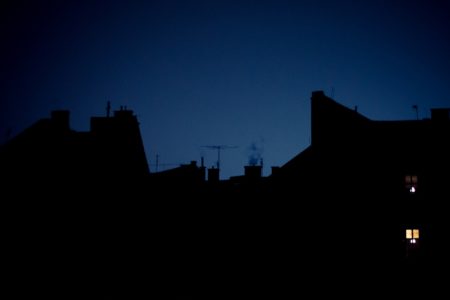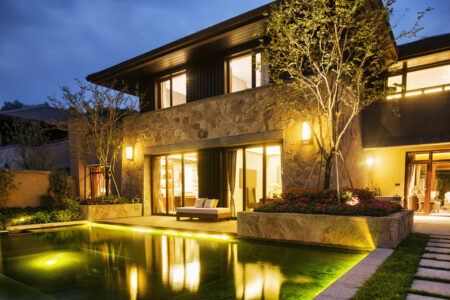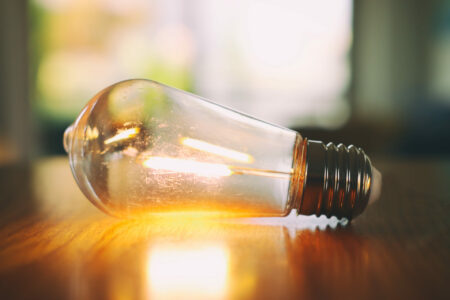Today many people install LED lighting due to the various advantages like low energy consumption or long lifetime. But LED lights are more complicated from a technical point of view. This is why there are many known problems that can occur with LED bulbs which spoil the party. In this guide we will cover the most common problems with LED lighting and what you can do to fix them.
Most Common Problems with LED Lights
Despite what you might think, LED technology is still relatively new and as a result it is constantly developing. Many of the problems from the early days are gone but other issues can appear regularly in certain situations. In this article we’re going to detail some common problems with LED lighting and how to prevent them.
- Using the wrong current
- LED bulbs overheat
- Low quality solder and wire bonds
- Improper use of LED lighting
- Issues with color rendering
- Existing fittings and fixtures are incomparable
- Light Emitting Efficacy
- Overly complicated circuits
- They don’t last as long as the manufacturers state
These are the most common issues but before we get into detail let’s cover two of the major reasons for typical problems with LED lights. The first is that people often choose the cheapest options available. LED Lights that have been fully certified and rigorously tested when they are used correctly, may well serve you a long time and you will end up getting what you pay for.
But above all else poor ventilation and overheating causes the second most issue that result in a decreased lifespan for LED bulbs. People then often rant about the LED technology but it was their fault to screw a high power LED bulb into an enclosed fixture where heat accumulation made the bulb fail.
Now let’s get into the details of the most common issues.
Using the wrong current
Fluctuations in current can directly impact the lifetime of an LED bulb. LEDs are dependent on constant and consistent current and as a consequence a current rush can be extremely damaging. For example screwing an LED light in while it is still switched on can blow the bulbs semiconductors. This can also happen if your LED light is switched on and off too often which can result in a current rush beyond the expected parameters.
To prevent this issue, higher quality bulbs have been fitted with what’s called a soft start and this is designed to prevent damage from a current spike. If the current running in your circuit is higher than what your LED light has been rated to deal with this will eventually cause it to fail
LED bulbs overheat
Letting LED bulbs overheat will lead them to prematurely fail. The one rule you can never ignore and maintain your LEDs is that they need to be kept cool. Many people encounter issues with LEDs when they put them in proximity to other bulbs. The heat generated by these other bulbs can cause your LEDs to fail. Even the highest class LEDs with built-in heat sinks are not designed to deal with unexpected excessive heat.
When you ever install an LED you need to consider its position and how it will help to keep it cool. If you place the bulb either downwards or upwards, this will allow the hot air to comfortably escape. It’s also important to remember if you are placing an LED light facing downwards you need to leave the top of the fixture uncovered which will allow any excess heat to escape.
If you intend to place the LED sideways, you need to purchase a light bulb that has a larger heat sink design otherwise expect many of your bulbs to simply burn out. Using LED bulbs in warm climates near kitchen stoves or on ventilated garages and in any spot that doesn’t allow for adequate ventilation can cause LED bulbs frying.
Low quality solder and wire bonds
When you purchase an LED bulb from a trusted manufacturer they should already have been put through a series of rigorous tests. And it’s safe to assume that any of the solder wires or other components in the bulb are of a high enough quality. Without this testing its unlikely that the bulb will last as long as it states and this is often true for inexpensive LED bulbs.
Missing regulation is one of the biggest issues that arises with cheaper bulbs. As a result they become very hot internally which directly affects the soldered joints as they dry out and fell apart.
Improper use of LED lighting
Putting LED lights in enclosed fixtures or incandescent fixtures that have inefficient heat management systems will lead to the LED bulbs failing as they’re not designed to withstand the higher temperatures. The trapped air common in old-fashioned or enclosed fixtures allows your LED bulb and its components to warm up quickly and as there’s nowhere for the heat to escape the bulb will eventually fail after a short time.
These issues are far more common in cheaper LED lights as their heat sinks have been poorly designed. Incandescent fixtures are not designed to take LED bulbs as there’s no way to help the heat dissipate. The traditional bulbs are designed to radiate heat outwards so there are no specifically designed sockets which can help with heat dissipation. As a result installing LED bulbs in an older socket can cause the bulb fail.
Issues with color rendering
Incandescent bulbs produce light similar to sunlight, making spaces vibrant and bright and keeping all colors authentic. They refer this to as 100% color render index (CRI). LED lights however produce a 65 to 95 CRI which directly affects how we perceive green and red colors and how skin tones appear.
This may not be an issue for most people, it is something that in certain industries you need to remain aware of especially if specific objects should look natural.
Existing fittings and fixtures are incomparable
Another issue that arises with LED technology is that existing dimming circuitry in offices and homes may not be compatible. Traditional bulbs could be dimmed by regulating the voltage, and older circuits could easily make this happen.
Unfortunately LED bulbs have their own built-in circuitry designed to run on a low voltage. As a result these additional components need their own dimmers to run efficiently.
Light Emitting Efficacy
This issue is a little more complicated, but the brightness of LED lighting is measured differently to that of traditional incandescent bulbs. The alternative way of measuring brightness of these lights has led to a level of confusion, especially when people are looking to compare them to their pre-existing lighting setups.
The efficacy of LED bulbs is measured in lumens per watt. To measure the performance of a bulb, you need to know how efficiently it will convert watts (energy) into lumens (light). This will give you what’s known as the luminous efficacy of your bulb. Low efficacy bulbs either are using older technology or just cheaply built.
When you’re looking to purchase an efficient high quality LED bulb you should look for one that has the highest number of lumens and that uses the least amount of energy or watts to generate these.
Overly complicated circuits
When issues arise with lighting, experts will tell you that six times out of 10 they will find the problem in the circuit board. This statement is also accurate for LED technology. As the bulbs have become increasingly complicated, they are causing more and more problems with the older, more antiquated circuits they’re expected to run on.
Lighting is becoming more and more advanced. This is especially true for LED bulbs with extra features like Wi-Fi connection or integrated dimming effects. As a result, LED lighting is now driving behind the evolution of existing circuitry.
They don’t last as long as the manufacturers state
The biggest issue with LED lighting is that it doesn’t last as long as you would expect. This is because of a combination of all reasons listed above. Because of this and the fact that the technology is still relatively new, determining the accurate lifespan of an LED bulb in real-life settings is more theoretical than anything else.
Perfectly created lab conditions using compatible dimmers, the best fixtures, ideal temperatures and a perfectly stable current do not really reflect real-life conditions.
As a result, it’s difficult to truly know how long an LED bulb will last. The combination of incompatible fixtures and dimmers, excessive temperatures and having to deal with inconsistent power surges are all going to test your LED bulbs specifications.
Conclusion
Given the popularity of LED technology, perhaps it’s time the industry address the common problems with LED lighting. Perhaps they should spend less time and effort on extra features of LED bulbs. Instead spending more money on testing and regulation to decrease these potential points of failure.
Forcing companies to offer their customers better warranties and free replacements as standard will instantly increase the quality of the LED bulbs on sale. Customers have a right to get what they pay for. They want well tested high-quality products that they can trust.

